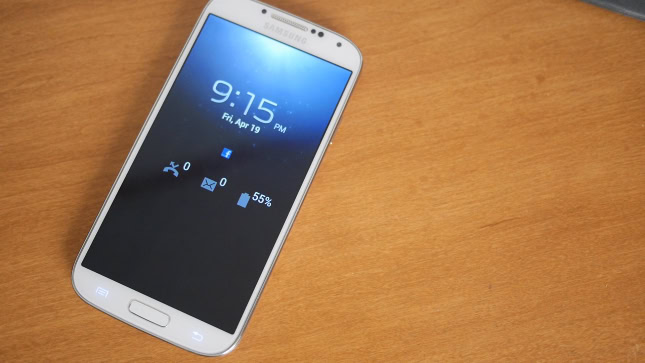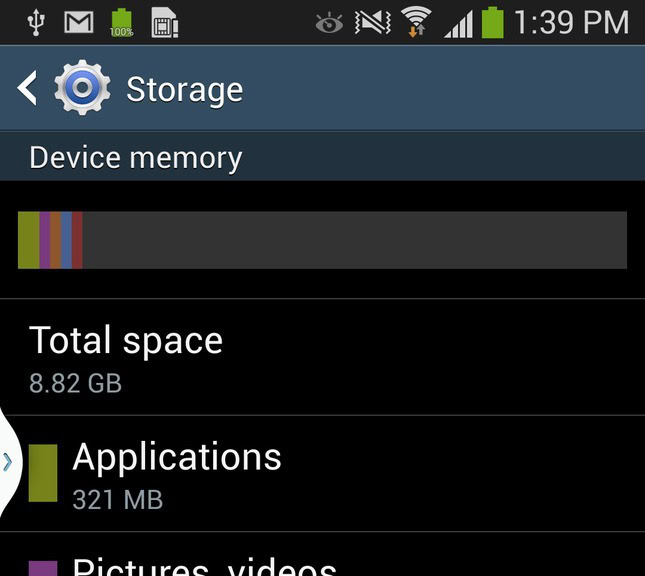Affiliate links on Android Authority may earn us a commission. Learn more.
Only 9GB of free space is available to users with the 16GB Samsung Galaxy S4
April 30, 2013

Anyone who owns a smartphone must have noticed that there is a difference between the advertised internal storage of the device, and the free space actually available to the user. The difference, which varies from device to device, is because of the installed Android OS, and other pre-installed apps and features that the device manufacturer packs the smartphone with. Considering the extensive features list of the Samsung Galaxy S4, you know where this is headed.
According to Geek, and people I’ve spoken to who’ve already got their hands on the Samsung Galaxy S4, only 8.82GB of internal storage is available to the user, which is just a little more than half the advertised space. Granted, the latest iteration of the Android OS itself takes up about 2GB, and loading a device up with features and apps is going to cut down on the available storage as well. But it certainly raises eyebrows when you’re missing almost 45% of the internal storage right out of the box.

Of course, microSD expansion is available up to 64GB, along with various cloud storage solutions, which you can use to store all your pictures, music, and documents. This doesn’t really help though as far as app storage is concerned, since not all apps can be stored on the microSD card. If you’re an avid gamer, just a few titles that require at least 1GB of space, like The Dark Knight Rises, Asphalt 7, The Amazing Spiderman, NFS Most Wanted, and Iron Man 3, together is more than enough to use up all the available space. Even without HD games, it’s quite easy to fill up 9GB of storage.
Another obvious solution is to pick up the 32GB or 64GB version of the device. This gives rise to another issue. For some reason, these versions aren’t available anywhere yet, with only the 16GB Galaxy S4 being released in worldwide markets for now. It’s great to be an early adopter, and one of the first few to show off the “latest and greatest” smartphone, but if device storage is a big concern for you, I’d recommend holding off till the versions with higher storage capabilities become available.
For the more technologically-inclined, another way to get around this is to root the device, but is a process that is definitely risky and difficult, and isn’t for everybody. That being said, rooting the device will remove all the bloatware the device is pre-loaded with, and should free up a lot more space for you to play around with.
You can check out some of the features that is taking up so much space in our hands-on review of the Samsung Galaxy S4 here –
When I got my first Nexus device, which I followed with the HTCOne X, it didn’t take too long to get used to life without microSD expansion, so this isn’t something we can’t get used to as well. But some difficult questions do arise, that I’ll leave to you, our readers, to answer.
Is it okay for device manufacturers to use up almost half the advertised internal storage for their own bloatware? When there is such a big difference, should OEMs now tell us what the actual available space is? Is it deceptive to advertise 16GB of storage when only a little more than half is available? Is almost 8GB of bloatware really necessary? Sound off in the comments section below!